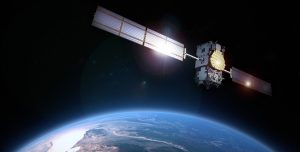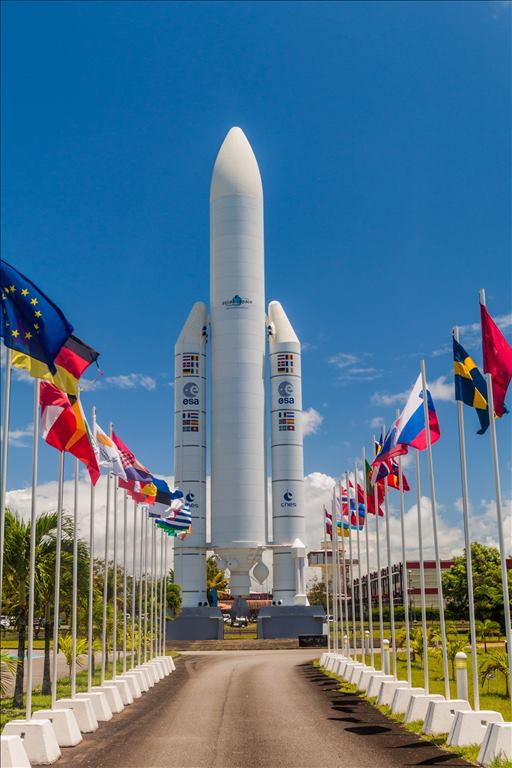Not since the Apollo and Sputnik missions has space garnered so much attention — but this time everybody is on board, writes James Fitzgerald.
The technological race for space is already blurring the boundaries between fact and fiction, and at its core is an adage borrowed from the imagination of Star Trek’s creators – “to boldly go where no one has gone before”.
But these would-be explorers must get off the ground first.
They might take their cue from United States President Donald Trump, who towards the end of his presidential address, said: “We stand at the birth of a new millennium, ready to unlock the mysteries of space; to free the Earth from the miseries of disease, and to harness the energies, industries and technologies of tomorrow…”
Despite Europe’s propensity for producing pioneers in rocket science and physics, it is the US’s National Aeronautics and Space Administration (NASA) that usually grabs the headlines — and sets the agenda. Where does that leave Europe in the ever expanding vista of space?
“2016 was a very good year for Europe in space. We achieved important milestones; we adopted a space strategy, we launched Galileo Initial Services, the Copernicus programme is now operational, with five sentinel satellites in orbit and six thematic services… and start-up and scale-up initiatives were adopted in November 2016. All of this brings new opportunities for business,” said Vera Pinto Gomes, a space policy analyst with the European Commission’s Galileo and EGNOS satellite navigation programmes.
The European Commission (EC) aims to create a European market based on space applications and services. “We want to create the right environment for a space economy,” said Ms Gomes at the recent DisruptSpace summit in Berlin.
The European Union Space Strategy was outlined last year and posits space as a strategic domain for Europe. Central to that will be the positioning and satellite navigation systems that are used in critical areas of the economy, such as mobile phones, electronic trading, in-car navigation, traffic management, power grid synchronisation, and search and rescue.

The satellite navigation market is growing at about 8 per cent a year, according to the EC. “Galileo has a number of specific features that no other system can offer, which open the way for many new innovative applications — the highest accuracy of any global navigation system today, with a precision of four metres, but with a few decimetres once the full constellation is in orbit,” said Ms Gomes.
Professor Jan Woerner, who was elected director general of the European Space Agency (ESA) in 2014, got the space bug in 1957, after the Soviets launched Sputnik into orbit. “Space is rapidly changing. Today, we have more than 70 space fairing nations and, in addition, a lot of private actors. Space is infrastructure for everybody,” said Prof Woerner, who previously headed the German Aerospace Centre (DLR).
“ESA has set up several programmes with direct investment from private actors. These partnerships have bold objectives: one, for example, aims to capture 50 per cent of a slice of the telecom market that will comprise of €25bn by 2030. In addition, ESA is supporting up to 140 start-ups using space for their business, or new technologies for space application, creating thousands of jobs all around Europe in 16 ESA Business Incubation Centres,” Prof Woerner told Chief-Exec.com.
The ESA has in the past spun-off companies such as Eutelsat — the French-based broadcast provider — once they become stable businesses. Arianespace, the world’s first commercial launch services provider, currently commands about 50 per cent of that market. Its Ariane 5, Soyuz-2 and Vega rockets all have an impressive record of reliability — a crucial factor brought home to SpaceX when its Falcon 9 rocket exploded on the pad at Cape Canaveral late last year.

“Maybe the most spectacular upcoming example is that ESA has created a maturity in that industry, so that Europe’s next generation launcher, Ariane 6, is also a public private partnership and not a public pays permanently. Ariane 6 will in 2020 not only assure Europe’s autonomous access to space, but also be a good business case for European industry. And that is an achievement that rests on the foundation of technological competences in space meticulously built up over decades by ESA and its member states,” said Prof Woerner.
Although the space community receives almost daily updates on new potentially habitable planets and moons, the mechanisms of rocket propulsion seem anachronistic when compared with the strides taken in almost all other technological spheres — where physical scales have shrunk and efficiencies have multiplied. Surely space cannot be conquered using 100-year-old combustion engines?
“In the last few years a true change has been happening in the space industry — a transition from an institutional to a commercial market,” said Coen Janssen, CFO of Magnitude Space, an Amsterdam-based start-up that offers low-cost, global Internet of Things connectivity via the space industry. “Innovation and miniaturisation of technology enables fit-for-purpose satellites to be launched, resulting in new business cases. The infrastructure can be up to 1,000 times cheaper than traditional large satellites.”
Big Space (NASA, ESA, China’s CNSA, etc) and Private Space (Blue Origin, SpaceX, Arianespace, etc) face both oppositional and collaborative dynamics as their respective objectives for space variously overlap and complement each other.
The industry can also be split between infrastructure (SpaceX, Planet, ArianeSpace) and applications (DirectTV, Orbital Insight, RS Metrics), where the former make physical assets, such as rockets and satellites, and the latter create products and services based on the foundations provided by the hardware — “purveyors of noughts and ones”.
“I argue that every single business on the planet can benefit from space applications,” said Amaresh Kollipara at this year’s Disrupt Space Summit. “Every company at its heart is really in software and information, whether you’re a pub down the street, or a software manufacturer, or you are Lufthansa airlines … and information and data driven by space will become a valuable asset in that production.”
Mr Kollipara, founder of Earth2Orbit, India’s first private space start-up, says there has been a tectonic shift in the forces of traditional space. “The themes, the topics, the definitions of traditional space have changed — I would say they are dead … It’s a period of collective disruption where various forces have come together to create this tidal wave of beneficial involvement — composed of business becoming more viable, entrepreneurs becoming more excited about the industry, and investors becoming more active.”
But also — perhaps driven by the drip feed of revelations on exoplanets and conditions for life throughout the cosmos — the public interest in space has revived to a level not seen since the Apollo and Sputnik era.
With NASA’s shuttle fleet in retirement, it is increasingly outsourcing launch services to SpaceX. The US company says it can take an astronaut to the international space station for $20m, versus the $70m cost of going on a Soyuz rocket. But as SpaceX’s reusable rocket technology becomes tried and tested — and the industry standard — it promises to slash prices across the board.
These structural and creative agents will have to contend with the inertia of regulations before reaching for the stars.
I argue that every single business on the planet can benefit from space applications
“The Outer Space treaty was a product of the Cold War, and was very similar to the Antarctica Treaty of 1959,” said Michael Listner of the Space Law & Policy Solutions think tank. If you put the two treaties side by side, they are very similar in principle. If you want to know what the Outer Space treaty is designed to do, look at the Antarctica treaty. Basically, what it says is that no nation can claim sovereignty over any section of outer space or celestial bodies — a moon, a planet, and asteroid, a comet. It means no nation can go and put down a flag and say ‘this is ours’.” He says that when the US first went to the Moon in the 1960s, and planted a flag, the US Congress passed a law, as part of the Authorisation Act, to stipulate that the flag was not a claim of sovereignty.
This regulation — under Article VI of the treaty — also covers private individuals, and so has been an impediment, at least theoretically, to people going out and claiming real estate and mining rights. Despite this, Elon Musk of SpaceX has stated that he would like to colonise Mars, and has made rapid progress in commercialising space. NASA, and other clients, have formed an orderly queue for his reusable rockets, which have dramatically reduced costs.
“There’s a workaround in place with the idea of space resources that has been promoted over the past couple of years … Article VI is the result of a compromise back when the treaty was being negotiated. The Soviet Union wanted the space activity limited to government entities, but the US foresaw a time when commercial or private entities would want to go out in space and perform activities … So they went back and forth until, eventually, the Soviets agreed — but on the stipulation that if you are going to allow commercial or private entities to perform space activities, a nation must first authorise it through some sort of licensing, and then continually supervise,” said Mr Listner.
The US Federal Aviation Administration currently licenses rockets, but the idea of supervision remains quite nebulous for all the 17 space-faring nations.
Denmark, which enacted its own domestic space law in 2016, permits its citizens to operate outside of the government’s umbrella. That activity would be subject to licensing requirements and insurance mandates, but could include the launch and operation of space objects from another country, such as the US. “Article VI allows a nation to not only permit its private citizens to perform outer space activities subject to ‘authorisation’ and ‘continuing supervision’, but it also allows a nation to continue its authority across national lines even though their citizens will be subject to the domestic space laws of the foreign nation they are performing their space activity from,” Mr Listner told Chief-Exec.com.
The UK’s ties with the ESA post-Brexit were underlined by science minister Jo Johnson at a recent Council of Ministers meeting in Lucerne, Switzerland. Mr Johnson reaffirmed the UK’s commitment to European collaboration on science programmes and continued investments in commercial projects covering navigation, Earth observation and the ExoMars project. The UK Space Agency (UKSA) currently plans to funnel €1.4bn into various ESA projects over the next five years, amounting to nearly 14 per cent of the total ESA budget.
One area of difficulty after Brexit would be the €10bn Galileo satellite navigation system, a project funded entirely by the EU. “UK-space has estimated the potential market for Galileo and related applications and service could be around €6bn by 2025,” writes Dr Chris Newman, of Sunderland University, in the latest edition of The Précis, a space law and policy briefing letter. “With the EU providing the funding and most ESA members also being EU member states, post-Brexit, the funding for Galileo and associated lucrative contracts may be funnelled through EU member states within ESA which would have a significant impact upon UK space manufacturing.”
The UK government has pledged to underwrite any shortfall in funding on science research from the EU, but concerns remain over restrictions on the movement of people, given that about a third of the UK space workforce originates from overseas.
These geo-political wrangles appear parochial amid the context of galactic endeavours.
Imagination will often carry us to worlds that never were. But without it, we go nowhere
If we imagine the Milky Way as a busy city, Earth sits in an outlying suburb, perhaps eventually to be flipped off by its inexorable whiplash. The real action is down town, near the galactic core. Therefore, space exploration would be more about looking inwards than outwards. And that might apply on a personal level to the individuals seeking to exploit this new frontier — the mechanisms of their motives and value systems. The sooner we master — or release — the technology to turn back towards the centre, the sooner we inherit the kingdom.
“People are frequently asking for the return of investment, and mean the direct return. We can justify that €1 invested in space gains €6 in [the] economy. However the spirit inspired by space to be motivated to realise dreams has an even bigger value,” said Dr Woerner.
With 200 trillion galaxies within the observable universe, it is fair to say that human endeavour in space, and the possibilities it affords for personal as well as commercial development, is virtually unlimited.
“In our search for the reason for our existence, some of the answers may be found outside our own planet. I believe that looking beyond our own Earth, people start realising how precious our home is. At Magnitude Space, we envision to enable monitoring the planet, gain new insights — leading to better and more sustainable lives and livelihoods,” said Mr Janssen.
As the cosmologist Carl Sagan surmised: “Imagination will often carry us to worlds that never were. But without it, we go nowhere.”





